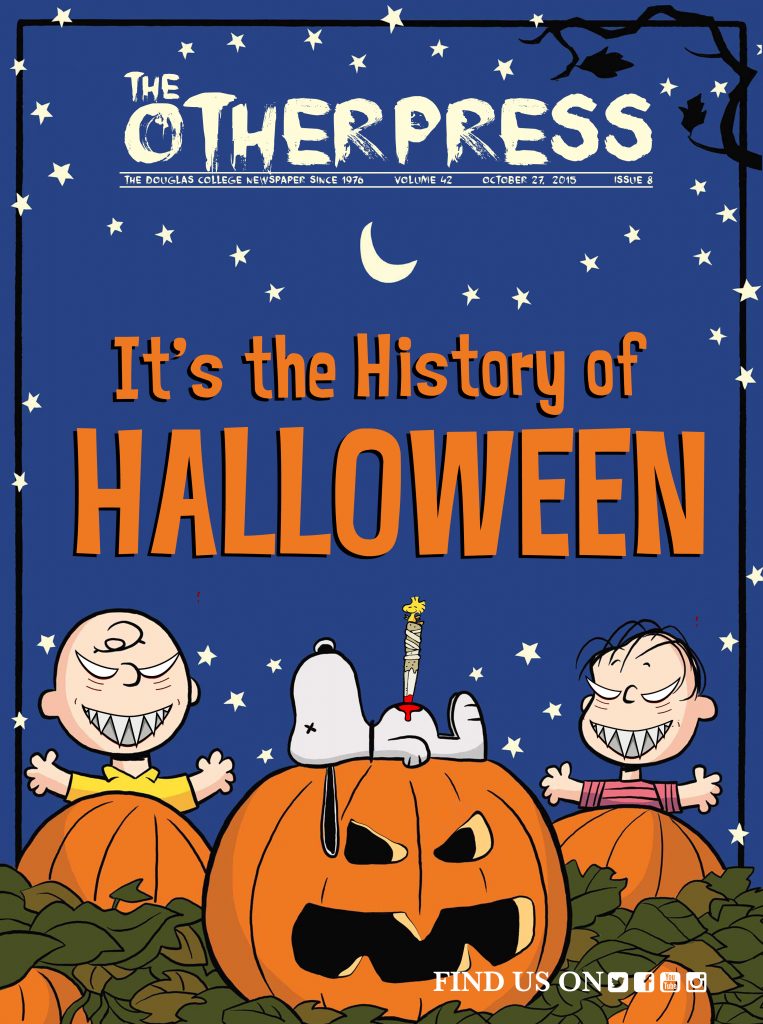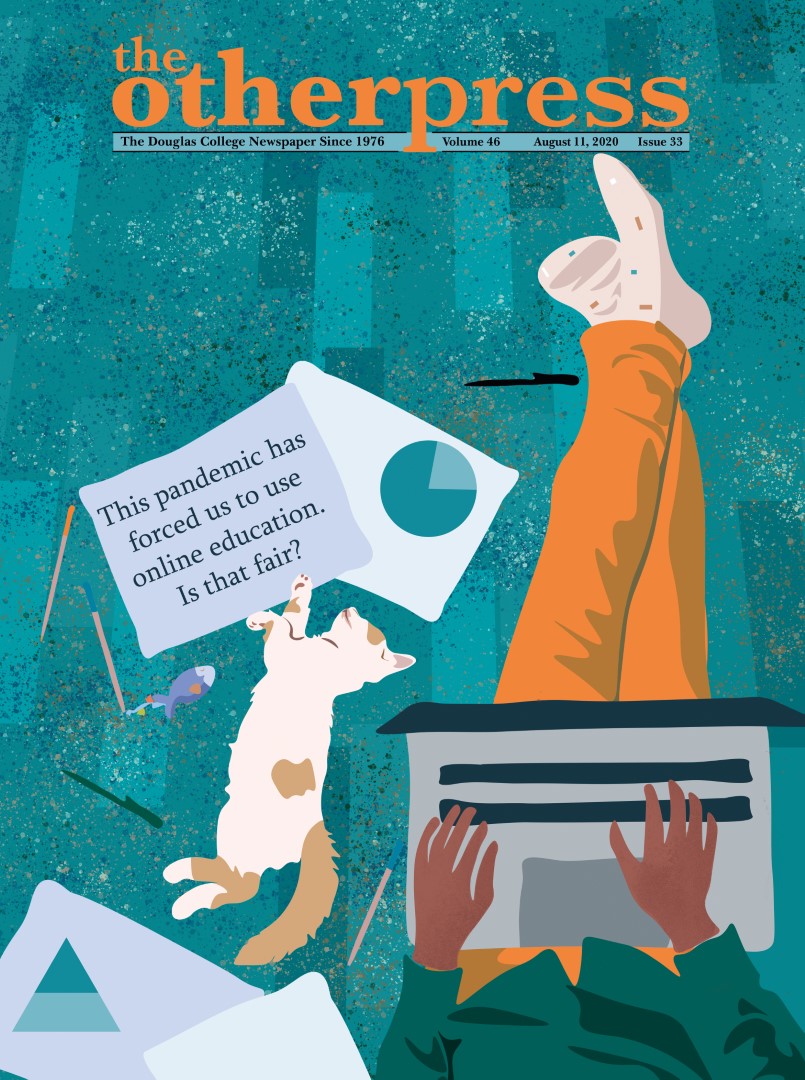The origins of our spooky festivities
By Cazzy Lewchuk, Staff Writer
Halloween is one of the largest and most celebrated holidays in North America. In fact, Halloween is the second-largest holiday (right after Christmas) in terms of celebrations and money with an estimated $1 billion spent in Canada and another $8 billion in the US. As early as August, retailers fill their shelves with all sorts of chocolates, candies, pumpkins, costumes, and decorations to bring the night of October 31 to life. Children usually go door-to-door dressed in costumes seeking goodies, while their older counterparts dress up and spend the night drinking and having fun with their friends and families. Most everyone uses Halloween as an excuse to celebrate horror and scare others for fun.
But what does this holiday really mean? What is the origin of celebrating horror, of lighting up hollow pumpkins, of dressing in costumes?
Although Halloween is a combination of Christian and pagan influences and the origins and combinations of festivals are widely debated, it is generally agreed that this holiday originally comes primarily from Christianity. From October 31 to November 2 is a period of time during which Western Christians remember the faithful departed souls—particularly their recognized martyrs and saints. In the beginning it was known as “All Hallow’s Eve,” before being contracted to “Hallowe’en.” Celebrations to remember the dead are common across many cultures, with the specific time of year often moved to coincide with this Christian ritual. The night of October 31 was traditionally thought to be the time when the afterlife came close to the actual world. This recognition of the supernatural became the horror-themed celebration we know today. An unrelated pagan ritual known as “Samhain” is also traditionally celebrated on the night of October 31, which marks the end of harvest. Eventually the holidays merged in the 19th and 20th century.
Trick-or-treating is perhaps the most recognizable part of the holiday. The concept emerged from several cultural practices that involve seeking treats going door-to-door. In the Middle Ages, those in need would go to residences on November 1 and ask for food offerings in exchange for prayers for departed souls. This practice was known as “guising” or “souling.” During All Hallow’s Eve, some people would dress in costumes or use masks so as not to be recognized by a departed soul. Modern trick-or-treating performed by children originated in North America in the early 20th century. It was not mainstream until the 1930s or 1940s, but became popular after World War II ended and sugar and candy was plentiful again. In some areas—particularly in Scotland and Ireland—the “trick” part is taken seriously; children are often expected to perform some sort of act or talent in exchange for their reward. Nowadays, the “trick” may be seen as more of a threat as far too many unwitting house owners have fallen prey to smashed pumpkins or egged walls after refusing to give out candy to rowdy youngsters.
The jack-o’-lantern, another ubiquitous Halloween symbol, has multiple origin stories and connections. Some folklore tells of how “Jack” was trapped by the devil, who was tricked by Jack from claiming his soul. After dying, Jack was denied entrance to heaven due to his sinful lifestyle, and he continues to wander the world with his lantern, searching for a place to rest.
The carving of vegetables for lantern usage has been in place for centuries and coincides with early All Hallow’s Eve celebrations. In Europe, turnips or squash were used as light sources to guide those who were souling. The pumpkin variation originated in North America, simply due to the climate conditions, which made them easier to grow in this part of the world. Using pumpkins for carving and nutrition was part of the culture before being associated with Halloween, and is also a traditional part of Thanksgiving decoration.
Halloween is celebrated differently all over the world, but it is by far, biggest in Canada and the US. Many cultures—even English-speaking ones—would find our style almost unrecognizable. In Australia and New Zealand, Halloween is not widely practiced. Many parts of Europe have also only adopted Halloween celebrations in the last couple of decades due to Western pop culture. In Asia, Halloween’s influence is generally even less than in Europe. However, certain cultures have celebrations for the dead and the supernatural that may be combined with Western Halloween activities around the same time.
The darker side of Halloween—i.e., the unsafe practices and vandalism—go back as far as the celebration itself. In 1912, the Boy Scouts of America put out a declaration encouraging safe practices and discouraging vandalism for all on Halloween night. Today, smashing pumpkins, toilet papering, and destroying decorations are just some of the “tricks” that often occur on the holiday. Some places even celebrate “Mischief Night” on October 30 (also known as “Gate Night” in BC) during which pranks are common and encouraged. The practice of tricking the night before the treating is very regional, being common in some areas and almost unheard of in others. Communities often encourage controlled and harm-reducing Halloween activities for increased safety, and generally, it is adults and teenagers who are more likely to be injured than children. In addition, the concept of poisoned or razor-blade Halloween candy is widely regarded to be a myth.
The Halloween season is also the time of year when the horror genre becomes not just mainstream, but celebrated. October is a time for scary movies to be widely shown and remembered. Horror figures like Freddy Krueger, Dracula, and Halloween killer Michael Meyers contribute to the pop culture importance of Halloween today.
The huge holiday of Halloween is a wide amalgamation of cultural, religious, and traditional practices combined with pop culture and capitalism. While many of its more traditional aspects have been forgotten or warped, its popularity remains high. It seems likely that Western influence and the promise of money in the industry will lead Halloween to become only bigger in the years ahead, after all, it seems like the Halloween decorations show up in stores just a little bit earlier every year.



